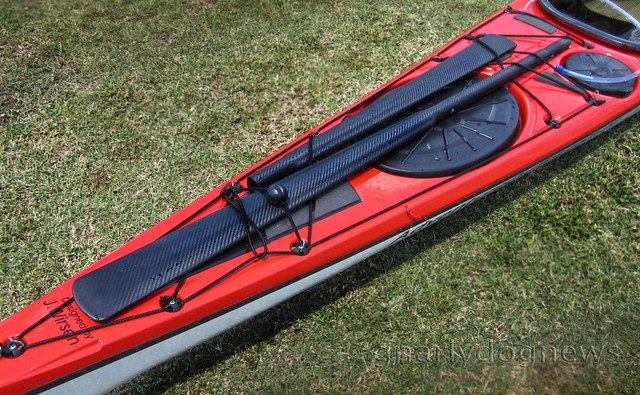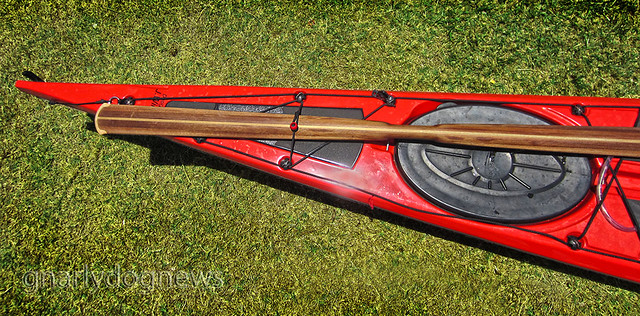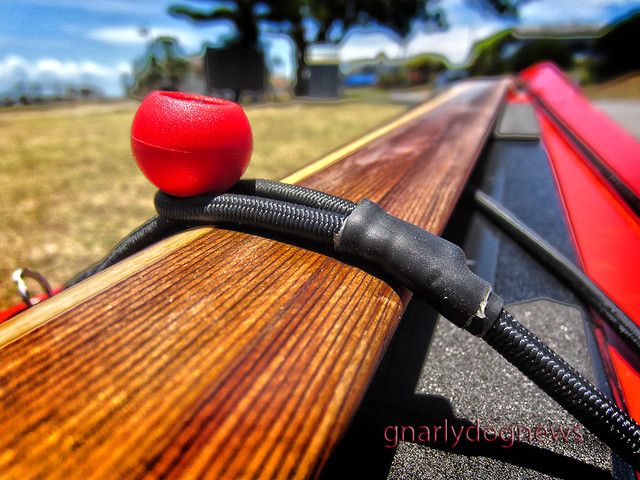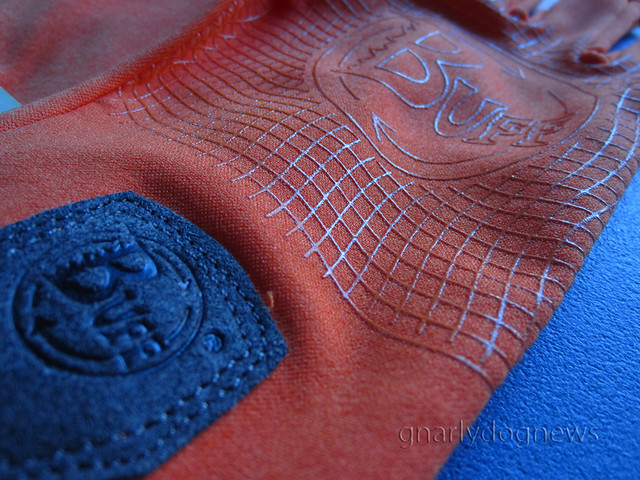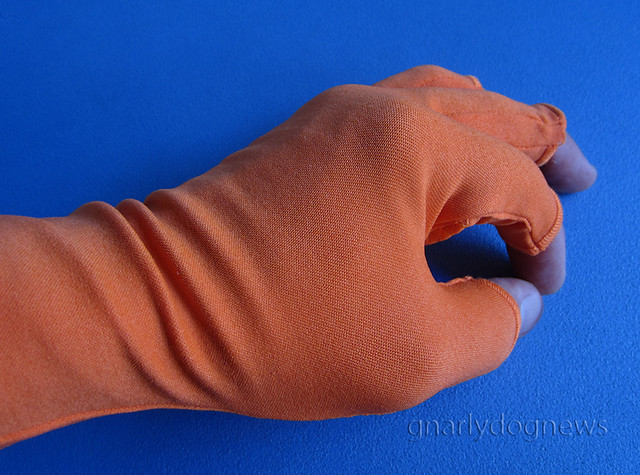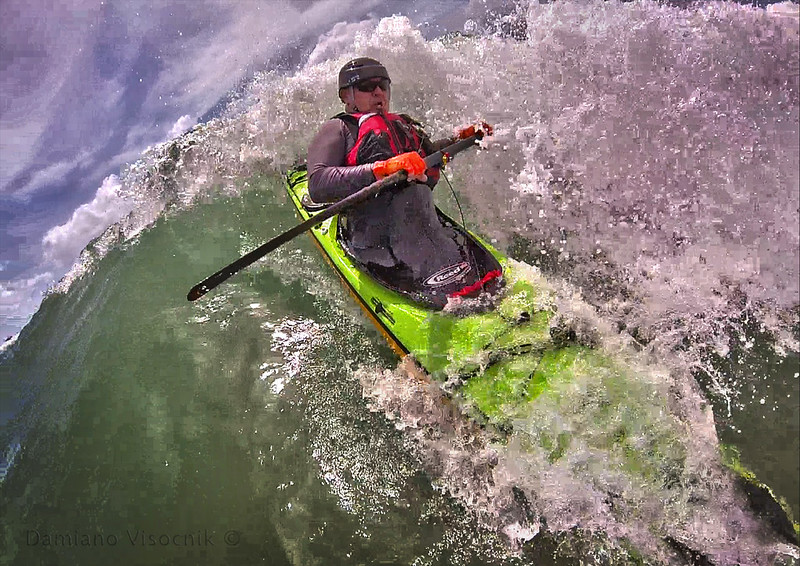I found myself constantly sweeping on my right hand side with my
The mild
swell of 1.5 mt and the stern wind of 15 knots were affecting my British kayak
like I have not experienced before.
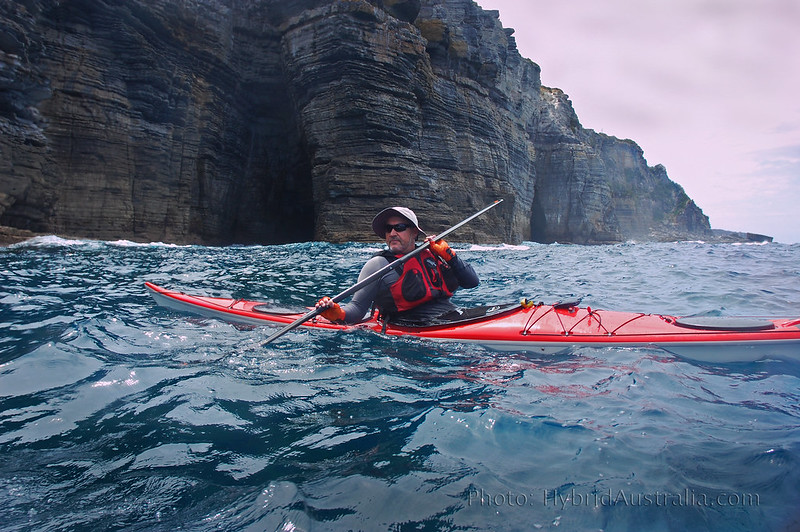
in a bay away from the heavy seas
I often
paddle in environments where wind is the only reason for a bumpy sea.
Even on my
extended trips I have dealt with following seas and breezes with ease where a
bit of skeg control would balance the weather cocking of my rudderless kayaks.
I used to
paddle kayaks with over-stern rudders and while I found the cruising much easier
than in a skegged boat I eventually abandoned the pesky blade sticking from the
end of my boat.
The
deciding point of getting rid of those kayaks with “crutches” came when for the
3rd time my rudder was damaged when paddling in waves.
I was not
happy with the unreliability of rudders.
As I
transitioned to skegged kayaks I learned how to maneuver a boat with my body (by
edging) and sweeping paddle strokes while directional stability was taken care by
the adjustable skeg.
I now have
6 sea kayaks, all without rudders.
There is no
denying that a skegged kayak is slower for me and that I don’t keep a perfectly
true course in following seas. That does not bother me: I am in no rush and I
usually don’t like to paddle too close to my buddies to be then bumping into
them if my kayak sways a bit.
But all
that I wanted right now was keeping myself off the big spraying smashing waves
against the rocky coast. I looked over to my paddling buddy and I noticed that
he was paddling with greater ease and I didn’t see any corrective strokes.
He was
paddling a Hybrid550.
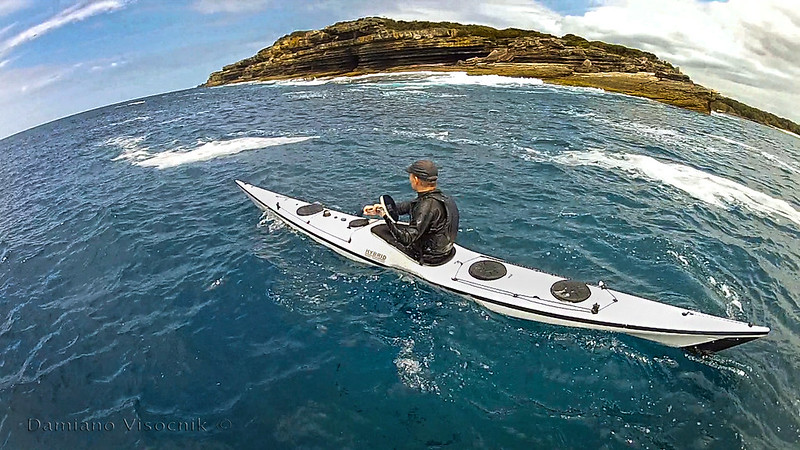

The
Hybrid550, designed by Andre Janecki, is a kayak like no other. It has features
that I have not seen on any other boat. The thought process that went into
designing and redefining that kayak is astonishing.
Unlike so
many kayaks that capture my attention and look so similar to each other, the
Hybrid550 is unique. Its cockpit concept is inspired by white water boats with
outstanding ergonomics for this chunky body of mine while still perfectly
accommodating a more nimble paddler. One thing that concerns me is the width of
the cockpit rim since my, how can I put it, “love handles” might rub after a
while. I hope one day Andre will produce the Hybrid 550 L (larger cockpit) but I understand his priorities are with the “UNLIMITED” www.hybridfoundation.org.au
What
intrigues me however is the unique design of the rudder.
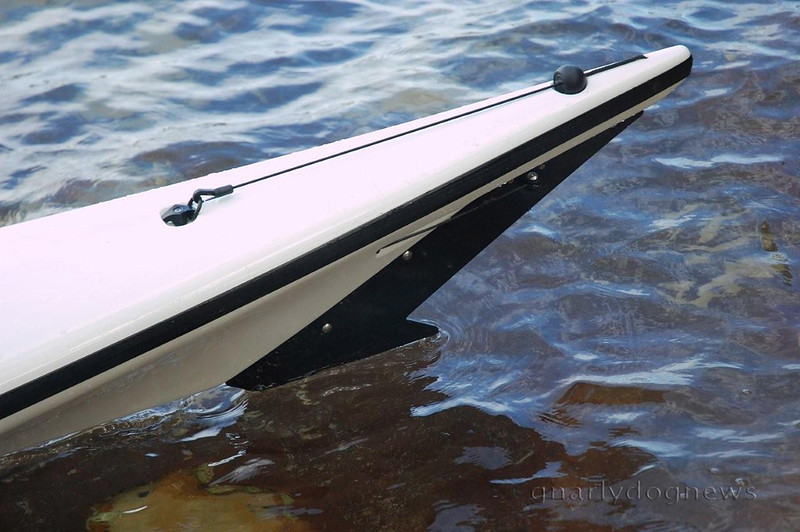


As I was
dissatisfied with my own rudder boats many years ago I looked at the alternative
integrated rudder of Mirage kayaks. I liked the look and I like the idea of not
having anything above deck, nothing to swing and insert in to the water with so
many less parts moving resulting in a simpler design. What concerned me though
is the fact that the Mirage rudder is always there, even when I want to seal
launch or beach land and drag the kayak.
After
repairing a few split rudder blades from friends' Mirages I decided
that if I wanted a rudder boat it had to be stronger than that.
I did the
initial mistake of confusing the rudder design of the Hybrid550 as a copy of
the Mirage but I never had a real close look at the details.
I now know
that the pivot points are totally different, the action of the swinging blade
is different and the construction is nothing like the Mirage...

I had a
GOOD look at the rudder on the Hybrid550 and I have one thing to say:
brilliant.
It can take
a reverse surf landing, right on the blade. What other ruddered kayak can do
that?
None that I have seen so far.

None that I have seen so far.

rudder folding away and bending when being hit
I am a skeg man, I don’t paddle with ruddered kayaks. I came to the realization that rudders are not suitable for my style of paddling.
I am a skeg man, I don’t paddle with ruddered kayaks. I came to the realization that rudders are not suitable for my style of paddling.
With the
Hybrid550 however I now have to rethink my philosophy.
Psychologists
have found that familiarity breeds fondness: Repeated exposure to a new idea
leads to progressively lower fear and avoidance and even, eventually,
sometimes, to acceptance. (Megan Kimble)

